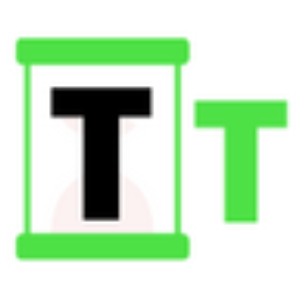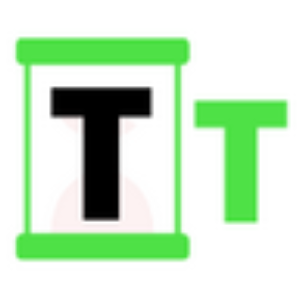Privacy and single points of failure are the biggest threats to crypto today
5 min read
In the world of Web3, there are certain elements that have to be perfect for a platform like an exchange to work for its community. If users do not feel like the exchange is fair, they will leave. If they feel like the exchange is vulnerable, they will leave. If they feel like the exchange might allow their private information to be taken, they will leave. And if they think the exchange can’t offer them the services and perks they want…they will leave. There are a few problems with this. Yes, a user should be able to participate on an exchange with confidence. However, no platform is 100% secure. That said, there are definitely industry standards that should be followed to maximize protection. More than that though, platforms should be following best practices to keep their customers’ data in compliance with regulations. They should also keep the data private and protected, while the funds themselves should stay with the customers. So how can an exchange meet these high, but certainly reasonable expectations? Let’s dive in to see how exchanges should protect their communities, what happens when they don’t, and what other gaps can sneak in and hurt customers. Balancing service and protection Creating a strong exchange does have some areas to balance. Protecting users can potentially limit services if not done correctly, and maximizing performance could potentially allow privacy vulnerabilities. However, there are some absolute best case elements that must happen to avoid serious risk. Any exchange should ensure they have institution-grade security, which means industrial encryption at a minimum. Because smart contract vulnerabilities can remain hidden for years, top exchanges work both internally and with third parties to be the first to find and fix these vulnerabilities. Audit specialists can help with increasing the quality. Even more, advanced solutions like red teams, which are designed to play the role of bad actors, can infiltrate systems so they can be fortified by the owners as lessons are learned. When looking for an exchange, users should conduct their own research to see what the platform has done to protect itself, both by instituting the proper security and encryption, and how well they’ve implemented third parties like auditors and red teams to proactively test and challenge the system. Exchanges are all about handling user funds, and this needs to have its own set of best practices. As a decentralized platform, exchanges should ensure that their protocols are protected from consensus risks (e.g., 51% attacks), ensuring independent nodes are able to authenticate proper processes, and that all inter-blockchain transactions are handled using the proper connective tissues. Within all this, exchanges should not allow themselves to lose speed and efficiency in their service to customers. Consensus, TPS, finality, and other key metrics should remain lightning fast and scalable. Protection should remain top of the line while performance can still be a competitive advantage. Balancing performance and privacy In addition to security, we can’t forget about another key protection for users: privacy. The ability to process user data, allow users to fully participate in the offered services, be fully compliant, and yet still maintain privacy where it matters is incredibly important. There are two key issues that can occur in a Web3 exchange and affect user privacy. First, a user’s information can be compromised through data leakage or surveillance. Whether at the hands of the exchange itself, through Web3 data brokers who buy the information, or by bad actors using illegal means, the exchange can potentially violate the privacy of its users, and never to their benefit. This is not a problem that solves itself, but instead must be meticulously addressed in practice. Furthermore, an exchange built on integrity should be able to produce transparency in its practices to show that it is actively protecting privacy. The second element of privacy issues can not only expose user data, it can negatively impact the value of user assets. Front running by advanced bots and traders can harm the trades users make, and even being able to see trades as they happen can significantly affect the market, which can then be manipulated by algorithmic trading. A platform actively addressing this issue is Enclave Markets . Their approach to protecting privacy, even during trading, is especially effective: Off-chain enclave maintains the market’s integrity; it is able to eliminate front-running by preventing algo traders from seeing trades. This can also create no slippage execution and zero-spread trading. what if opening a trade was as easy as sending a telegram message — Enclave Markets (@enclavemarkets) June 18, 2025 Other considerations A few other items to look for in a high quality, customer-focused exchange. After we’ve ensured that performance, privacy, and security can all be maintained, we can then look at those services that ensure trading fairness. One category that is often overlooked are points and reward programs. These might not be considered among “unfair practices” because they benefit users with free bonuses. However, this can be a major issue for the average user, who is greatly disadvantaged with most programs. As outlined in a recent article on crypto reward problems , the vast majority of rewards for these programs are given to a very small percentage of participants in the form of bots and whales, arguably the two groups who deserve these rewards the least. Volume, speed, or clever manipulation of many accounts can game the system and scoop up massive rewards, but the scale used is far outside the average user. Enclave Markets is an example of a platform working this issue as well, with a rewards program that balances different behaviors that would be harder for a whale or bot to scale up and get massive rewards. Instead, the average user can participate in different ways and get a bigger portion of the rewards than they otherwise might. This user-focused approach can be just as important as the care given to security and privacy, and shows just how much they care about their users. For Enclave Markets, there is newly launched feature called EdgeBot that allows users to conduct tracking of their targeted tokens, token discovery, and trade executions with just a few taps. Moreover, the users can accomplish all of this without leaving Telegram, making “time to action” extremely short and efficient. This is another example of the features that exchanges should be offering to their larger audience. Web3 users cannot simply assume that their exchange has their best interest at heart, or that they are as focused on security, privacy, or fair play as much as the user wishes. You need to perform your own due diligence, look for these key best practices to gauge a potential exchange, and even look at how rewards programs are conducted to make sure that an exchange actually cares about its community. Featured image via Shutterstock. The post Privacy and single points of failure are the biggest threats to crypto today appeared first on Finbold .

Source: Finbold



